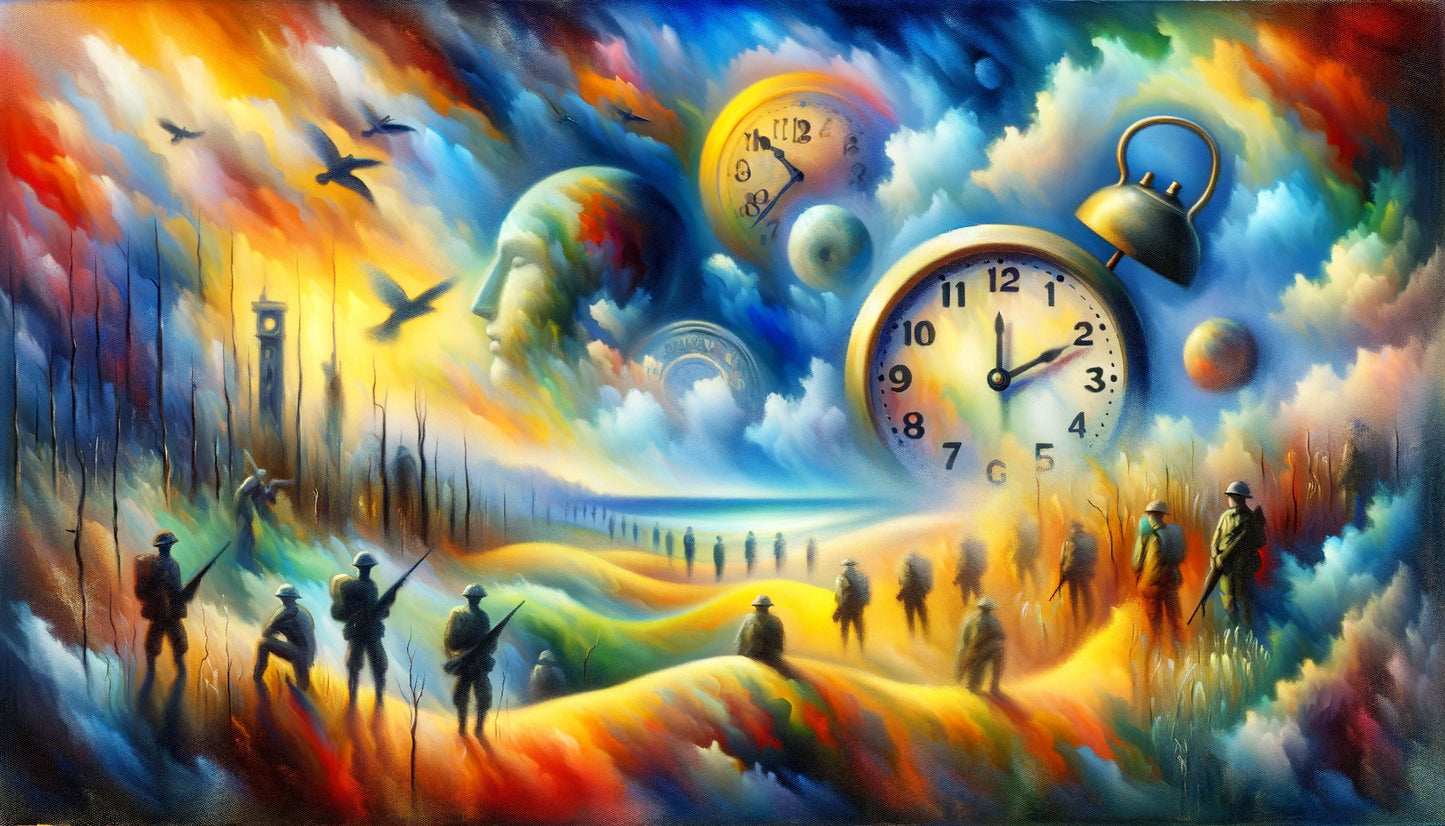Dream of Peace – Echo of Silence
Dream of Peace – Echo of Silence
Surrealizm
Historia i wojna
Lead time
Lead time
⏳ Delivery time
The order processing time depends on: the production technique, the drying time of the paints, the size of the image and any hand-finishing and protection.
🖼️ Art print on canvas
-
High quality canvas printing :
- Canvas - synthetic canvas 260 g
- Natural Canvas - 260 g cotton canvas
- Stretching the canvas onto the frame
- Quality control and packaging
Total completion time:
🎨 Oil Giclée Reproduction (print + hand-finished)
-
Giclée print on canvas:
- Canvas premium - natural cotton canvas 360 g
- Pigment print drying
- Hand finishing: texturing and oil painting
- Paint drying (depending on layer thickness, medium type and format)
- Stretching the canvas onto the frame
- Quality control and packaging
Total completion time: –
🚚 Ready-made paintings – shipped within 24 hours
Our gallery has a special category called "Ready-Made Paintings" - these are works available immediately, already stretched on a frame or in a ready-made frame.
- They are 100% ready for immediate shipment
- Safe packaging in a reinforced cardboard box
Shipping takes place within: from the date of booking the order.
Image format: Reprodukcja Oil Giclée
Need a different size? Contact us.
Couldn't load pickup availability
1. Title
"Dream of Peace – Echo of Silence"
2. Description of the image
"Dream of Peace – Echo of Silence" is a surreal meditation on the end of war. Clocks float in the colorful, unreal landscape – a symbol of the passage of time, as if even conflict couldn't last forever. The blurred silhouettes of soldiers drift like memories, weaponless, weightless, yet filled with meaning. The landscape – purple, amber, turquoise – resembles no place known to man, and yet it feels familiar: a place where war recedes and peace begins to grow in the cracks. The image doesn't call – it dreams.
3. Technology
Oil on canvas, with impasto and short, expressive brushstrokes, creating symbolic details: clocks, faces, the contours of ruins. Glazing and broad, soft color transitions meld everything into dreamlike planes. The technique gives the painting a suspended feeling—as if the world had paused in an act of understanding.
4. Style
Symbolic Surrealism – inspired by Salvador Dalí , René Magritte , and, more recently, the aesthetics of dreams and psychological landscapes. A style that combines the concrete with the abstract, the dramatic with the subtle, depicting the world not as it is, but as it could be.
5. Colors
A mystical palette: purples, blues, pinks, and amber gold. The colors don't represent objects—they represent states of mind. Warm and cool tones intertwine like emotions: fear, hope, relief, oblivion. Everything pulsates to the rhythm of another time—this inner time.
6. Invoice
Varied yet cohesive. Impasto lends physicality to the elements, while glazes make them vanish—as if the image were constantly changing before the viewer's eyes. It's the texture of a dream—sometimes sharp, sometimes dissipating like steam. Touch and breath at the same time.
7. Inspiration
The work of Dalí and Chagall , as well as the peace manifestos of 20th-century artists, inspires not only wars but also dreams of peace: childhood imaginings of the end of screaming, contemporary dreams of a quiet world. It also echoes Jungian philosophy – peace as the integration of shadows.
8. Message and multidimensionality of interpretation
This isn't an image of war—it's a dream that it might end. It's a reminder that conflict doesn't end in a moment of silence, but when the mind stops fighting. Clocks don't tick—they float. Soldiers don't disappear—they return to the light. It's a dream, but also a goal.
9. Originality and authenticity
Original because of its vision, which neither glorifies war nor escapes into morality play—it merely dreams of an alternative. Authentic because it is painted from emotion, not fact. This is a painting that doesn't tell a story—it simply provides space to fall silent. And in that silence... find peace.
✨ Not every dream of peace is unrealistic. Some are a future already being dreamed of. ✨
Share


